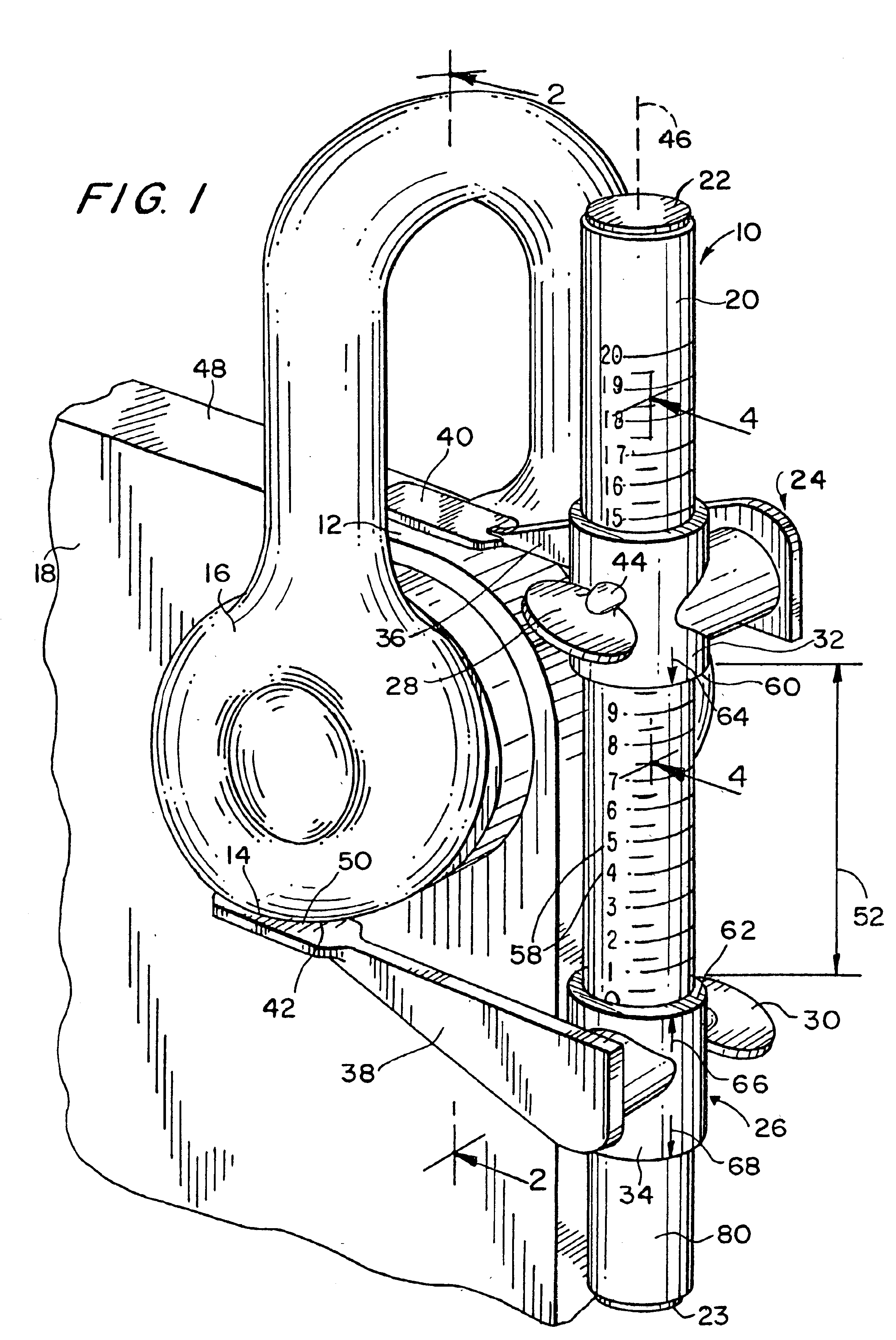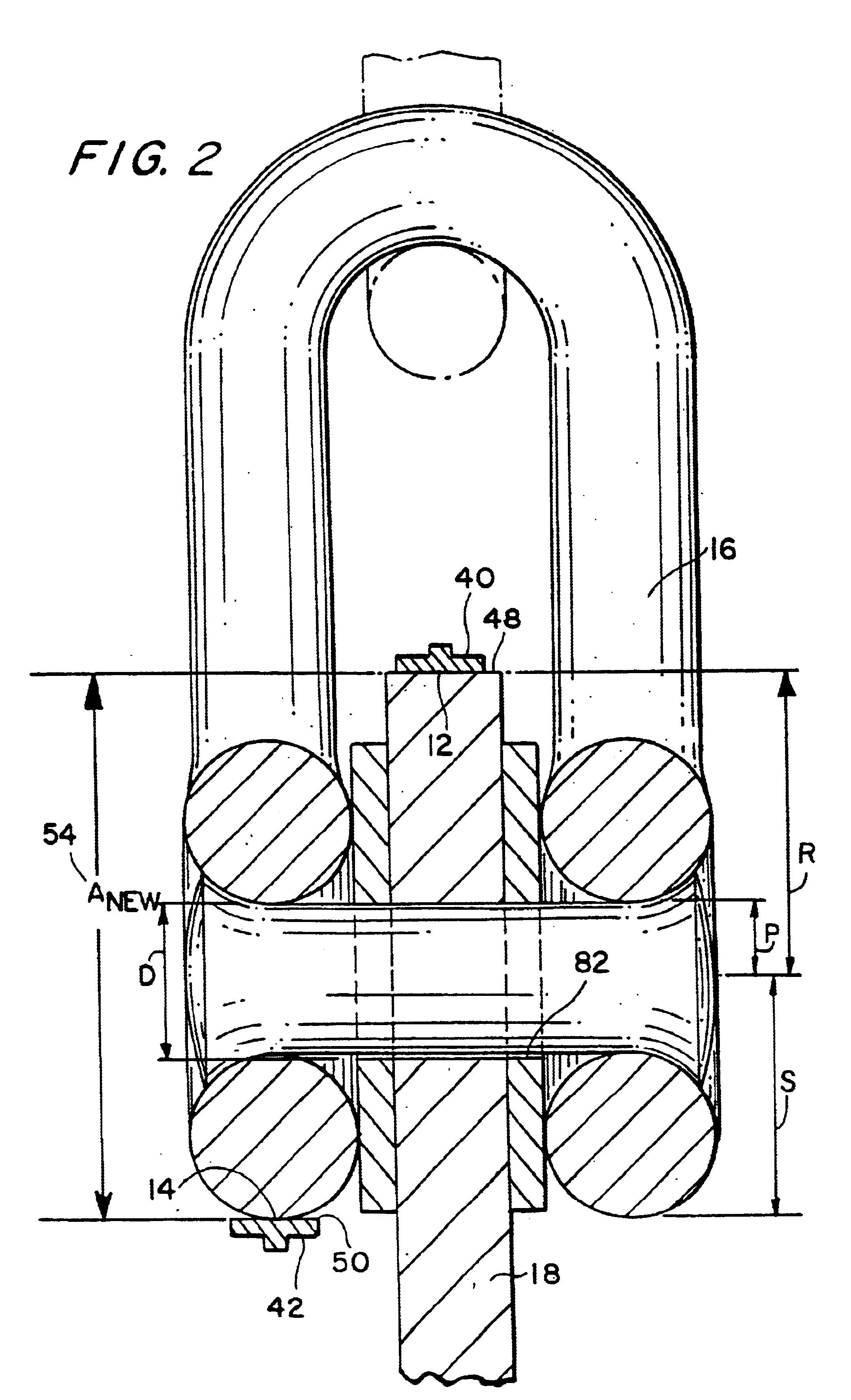Wear measurement gauge for padeyes shackles and chains
- Summary
- Abstract
- Description
- Claims
- Application Information
AI Technical Summary
Benefits of technology
Problems solved by technology
Method used
Image
Examples
first embodiment
In a first embodiment, with a padeye 18 engaging a shackle 16, shown in FIGS. 1-3, the radius R represents the radius of the padeye 18, the diameter D represents the padeye hole diameter, the depth P represents the half-shackle pin depth, and the radius S represents the shackle palm radius.
For a new padeye 18 coupled to a new shackle 16 illustrated in FIG. 2, with a slight gap 82 present, the references dimension ANEW, is determined by:
ANEW=R−(D / 2)+P+S.
As illustrated in FIG. 3, after some wear has occurred, any pre-existing gap 82 between the padeye and the shackle will have widened to be the gap 84, so the reference dimension AFIELD as measured in the field is determined by positioning the arm portions 36, 38 with respective surfaces 40, 42 of the slidable arms 24, 26 on the shackle 18 and the padeye 16, respectively.
The total combined wear of the padeye 18 and shackle pin from the new condition in FIG. 2 to the worn condition in FIG. 3 can be measured to be:
Total Wear=ANEW−AFIELD
a...
second embodiment
In a second embodiment shown in FIG. 5, with an intermediate chain link 72 engaging either one or two shackles or one or two chain links, such as the two links 70, 74, the intermediate chain link 72 has a chain length L and a chain diameter C. The reference dimension BNEW of a new chain link is determined to be:
BNEW=L−4C.
In the field, the reference dimension BFIELD is measured as shown in FIG. 5, with the arm portions 36, 38 with respective surfaces 40, 42 positioned on the same side of the longitudinal axis 46 of the tube 20, allowing both arm portions 36, 38 to be positioned between the ends of the adjacent chain links and / or shackles.
The total combined wear associated with the chain link is measured to be:
Total Wear=(BNEW−BFIELD) / 2
and the actual wear, as a percentage change from the new condition, can be measured to be:
Actual Wear (%)=100×[BNEW−BFIELD] / 4C.
For example, for a new chain link, the associated dimensional parameters can be L=381 mm. and C=63.5 mm., so the new reference...
PUM
 Login to View More
Login to View More Abstract
Description
Claims
Application Information
 Login to View More
Login to View More - R&D
- Intellectual Property
- Life Sciences
- Materials
- Tech Scout
- Unparalleled Data Quality
- Higher Quality Content
- 60% Fewer Hallucinations
Browse by: Latest US Patents, China's latest patents, Technical Efficacy Thesaurus, Application Domain, Technology Topic, Popular Technical Reports.
© 2025 PatSnap. All rights reserved.Legal|Privacy policy|Modern Slavery Act Transparency Statement|Sitemap|About US| Contact US: help@patsnap.com



